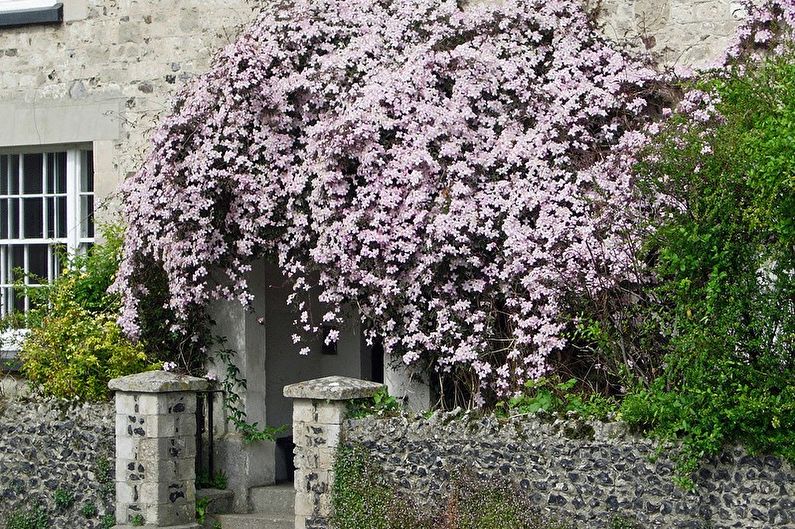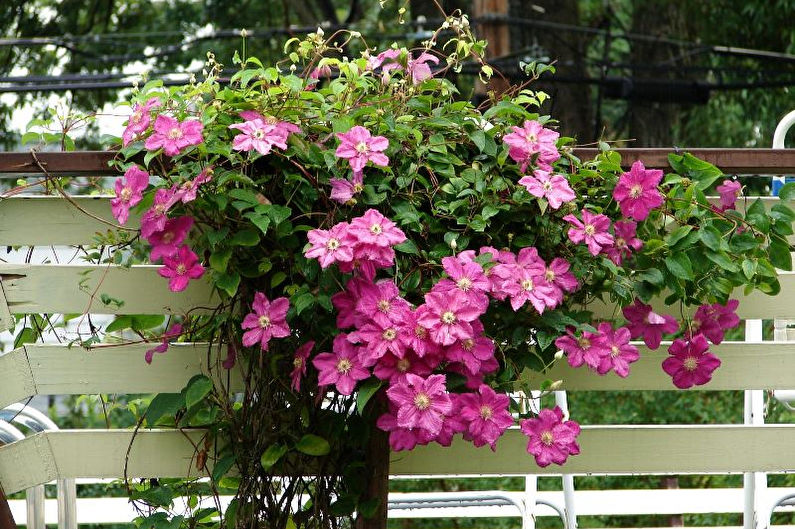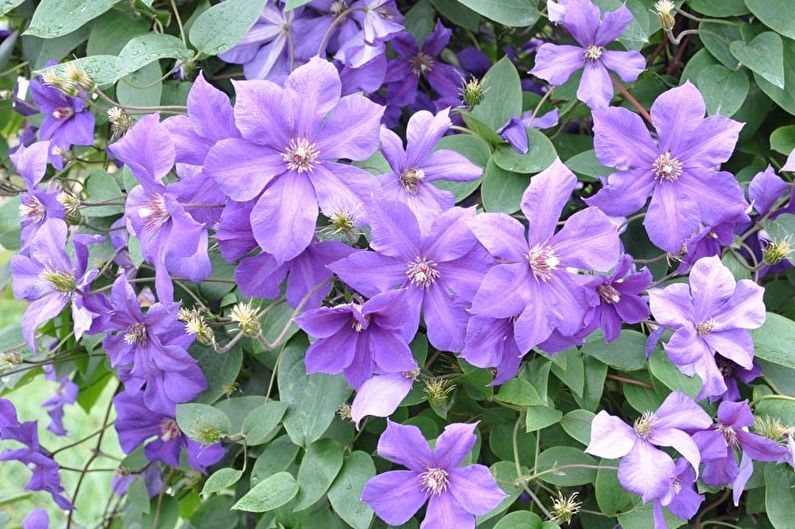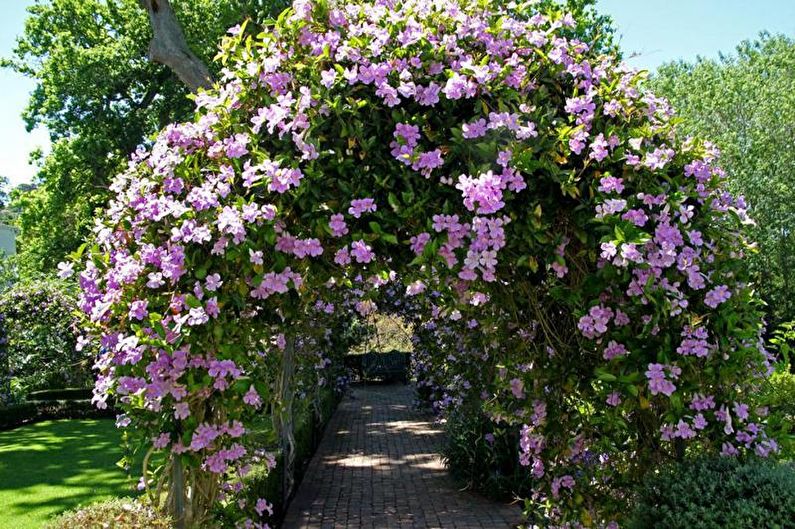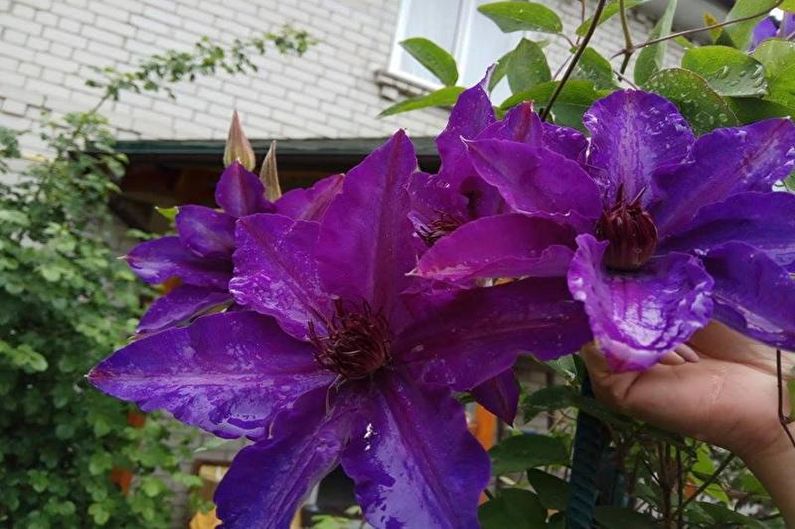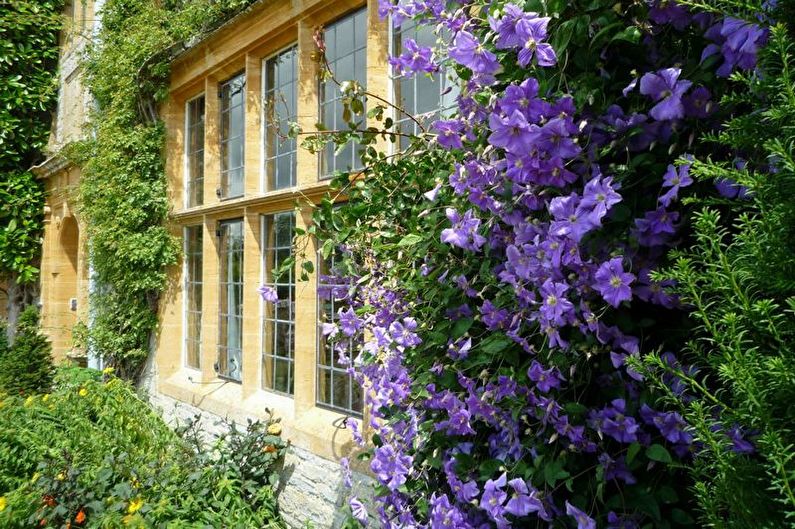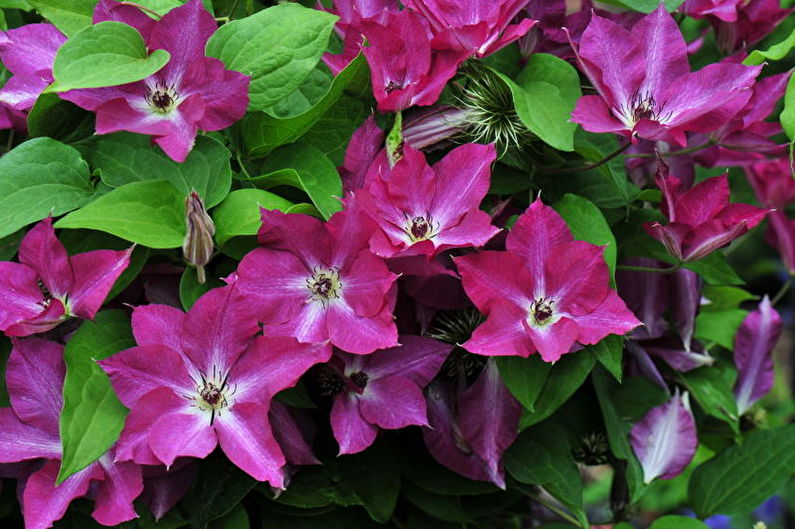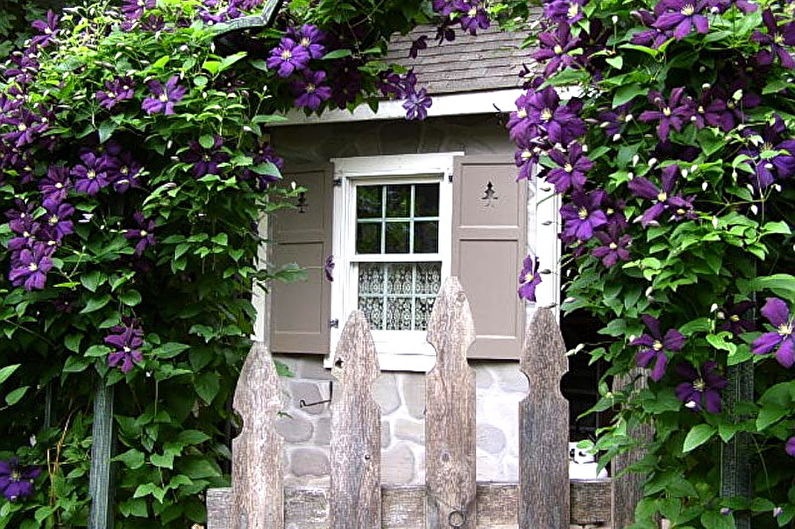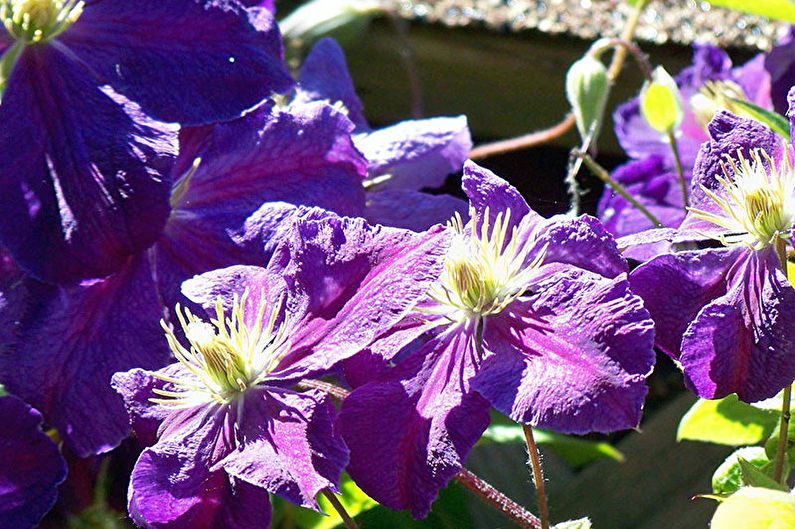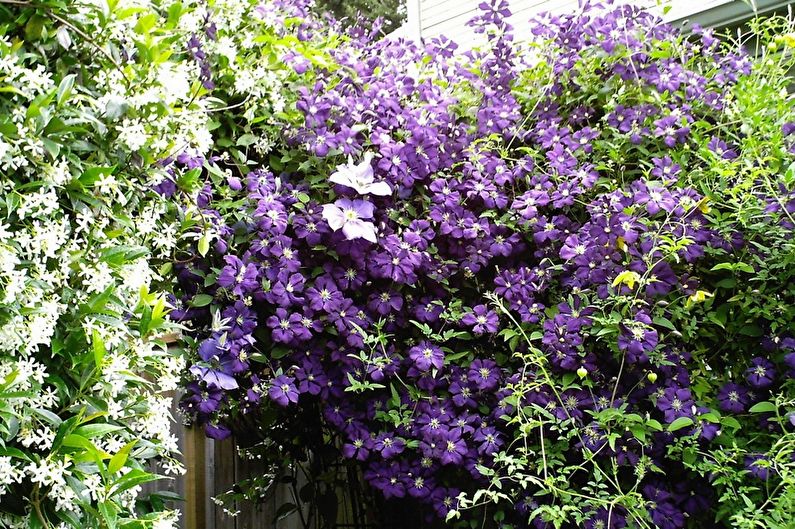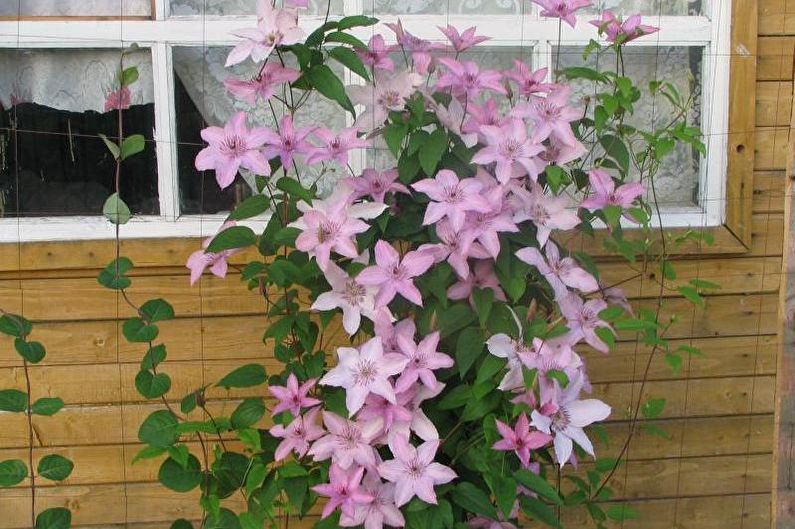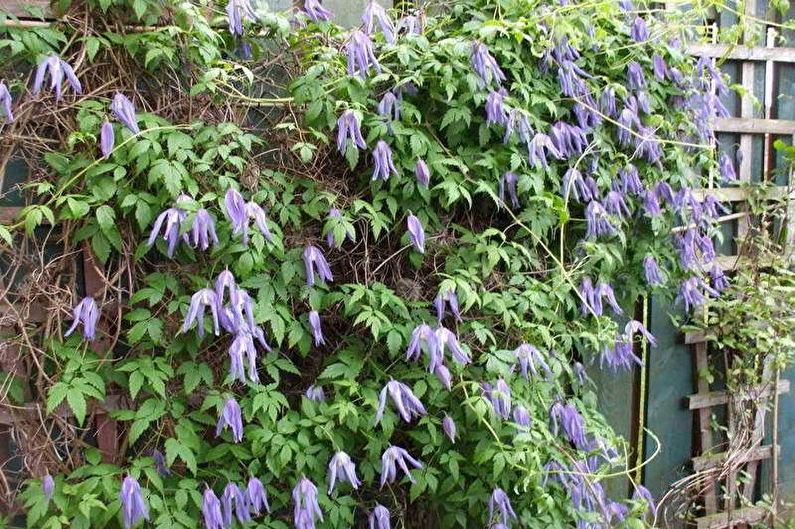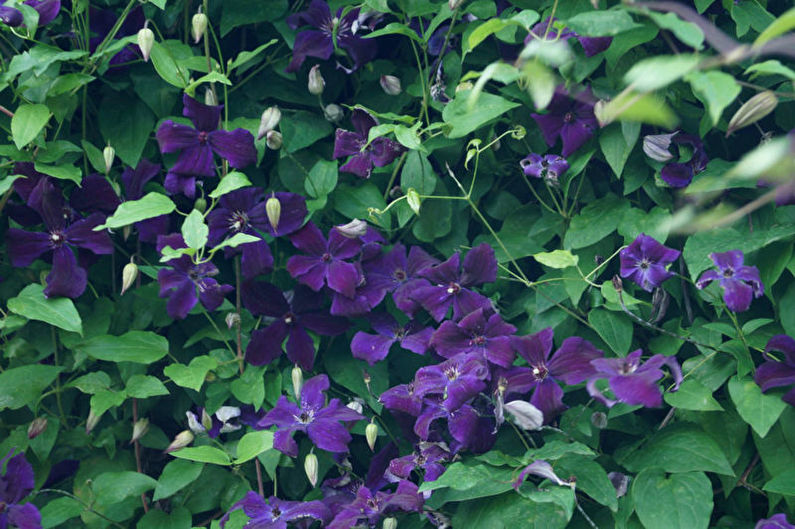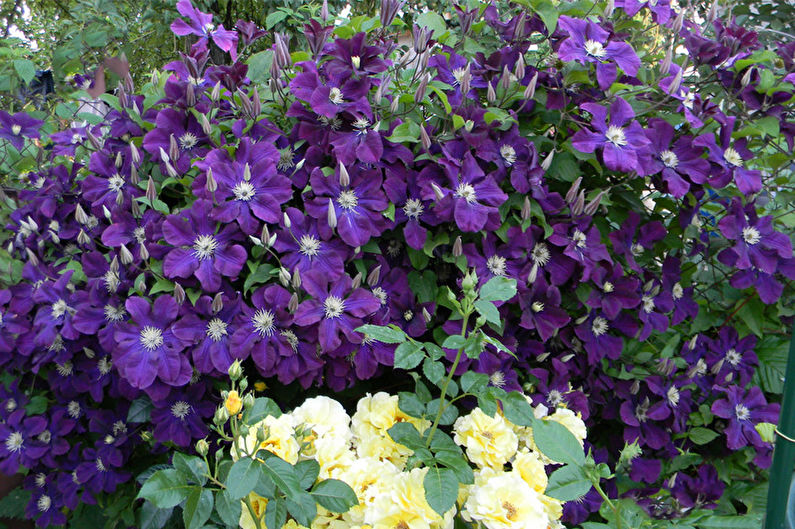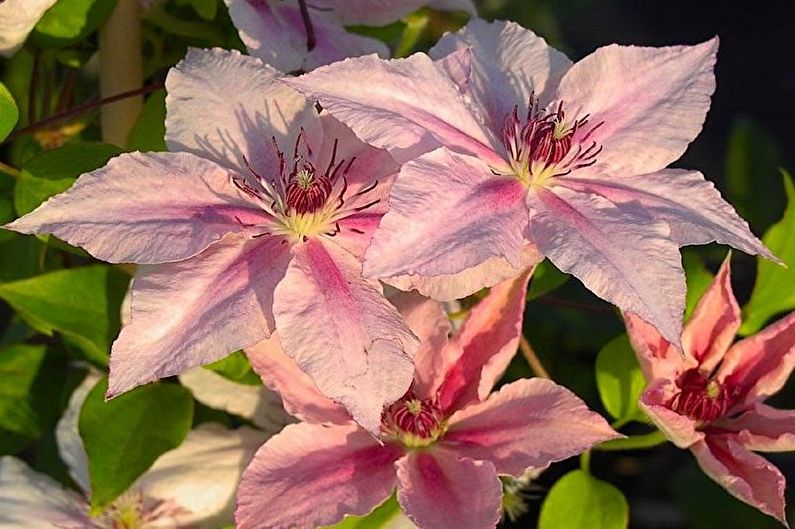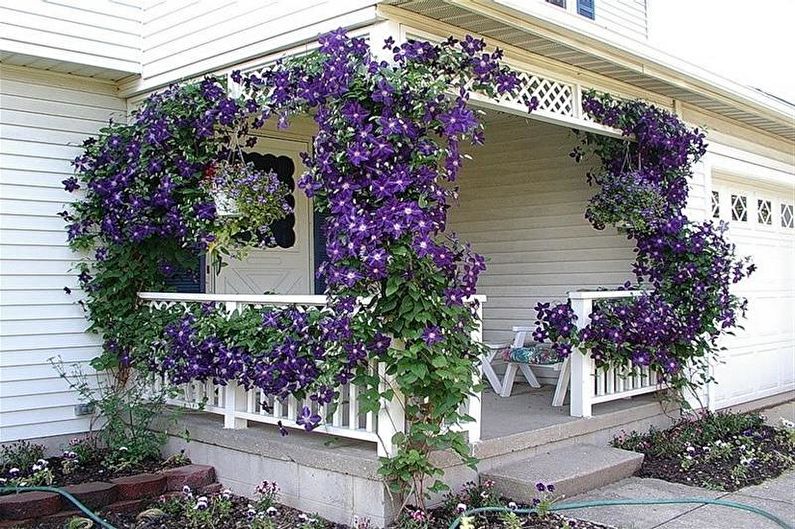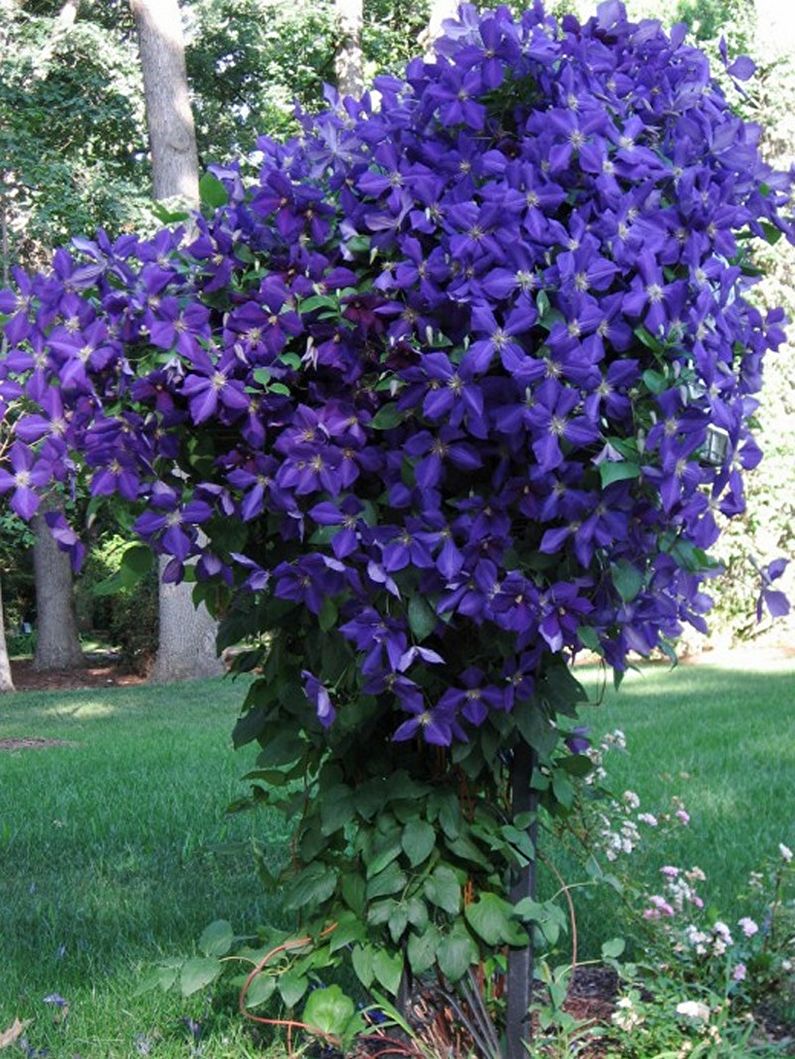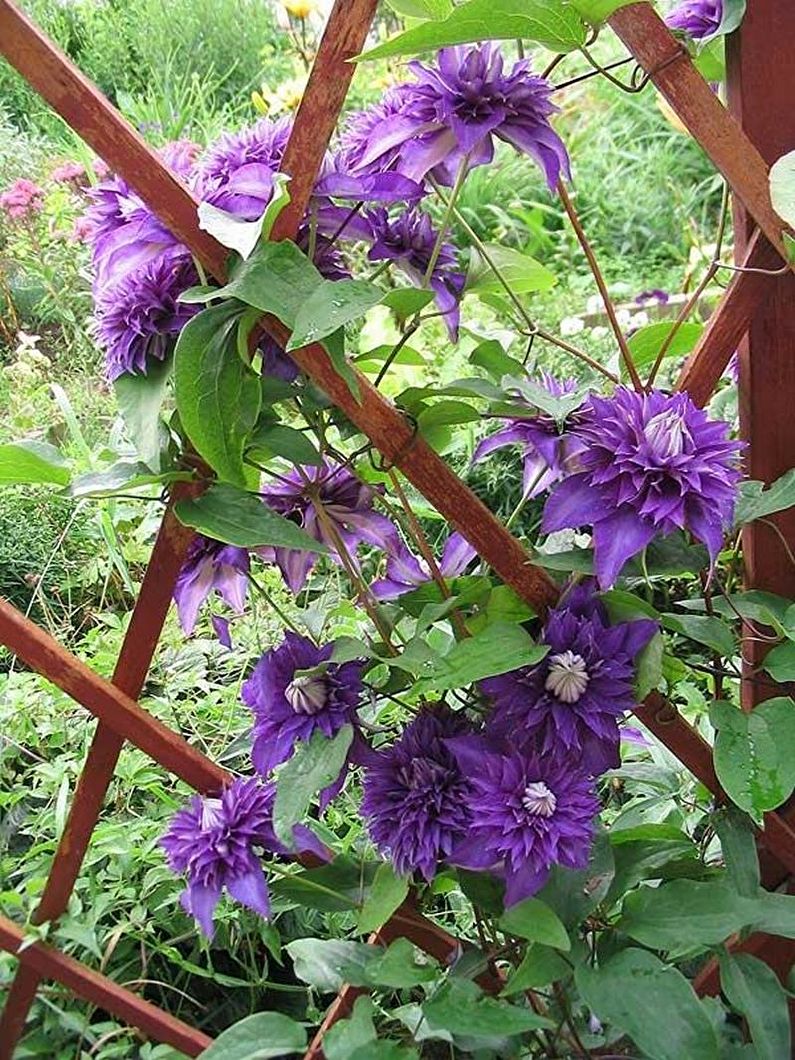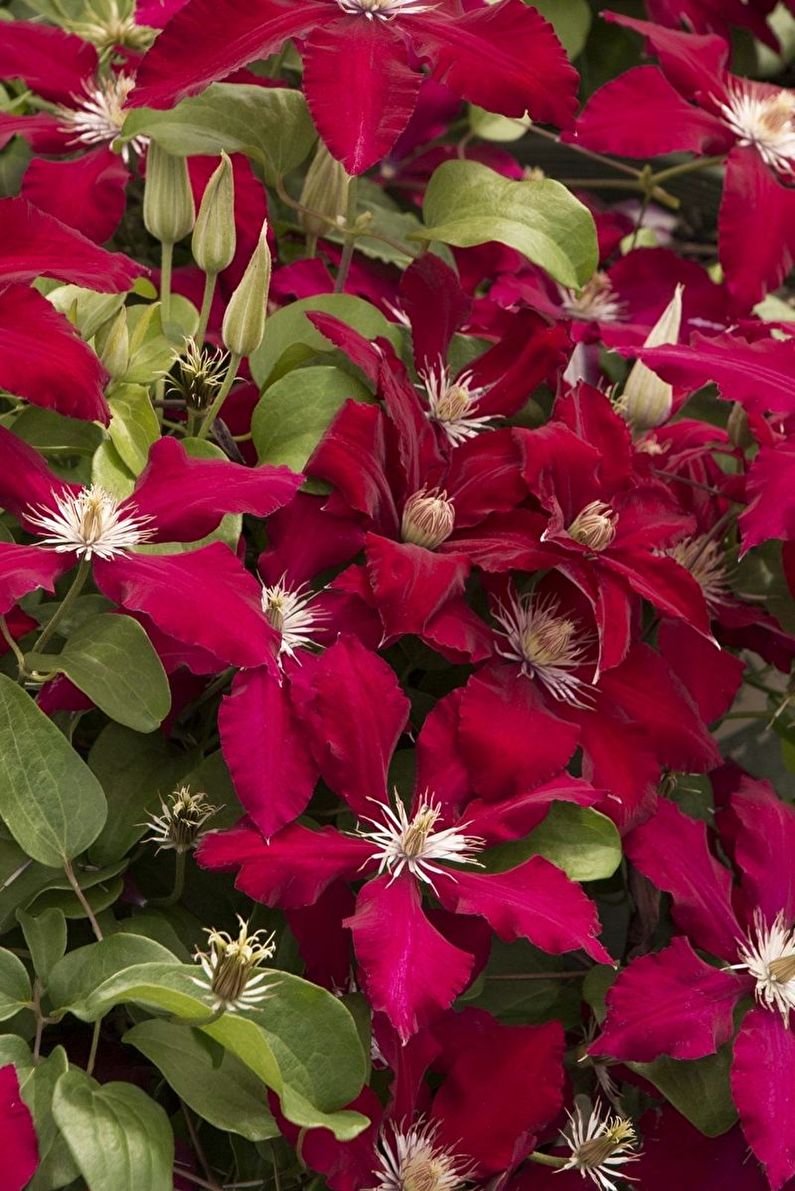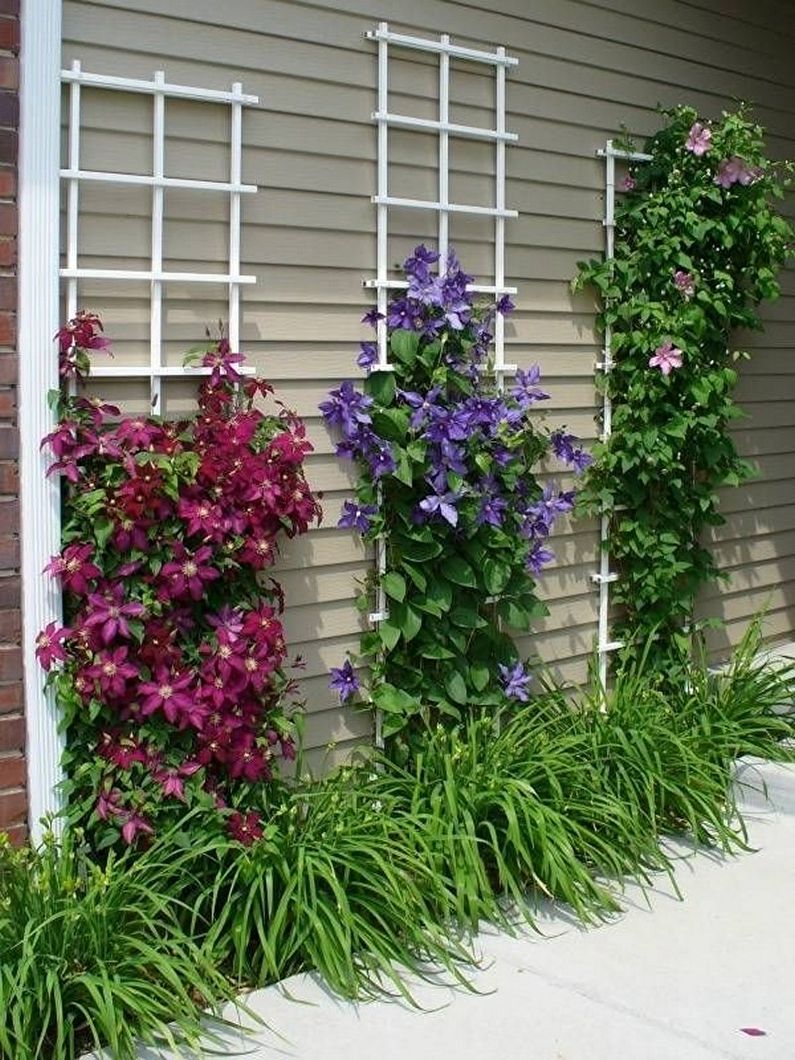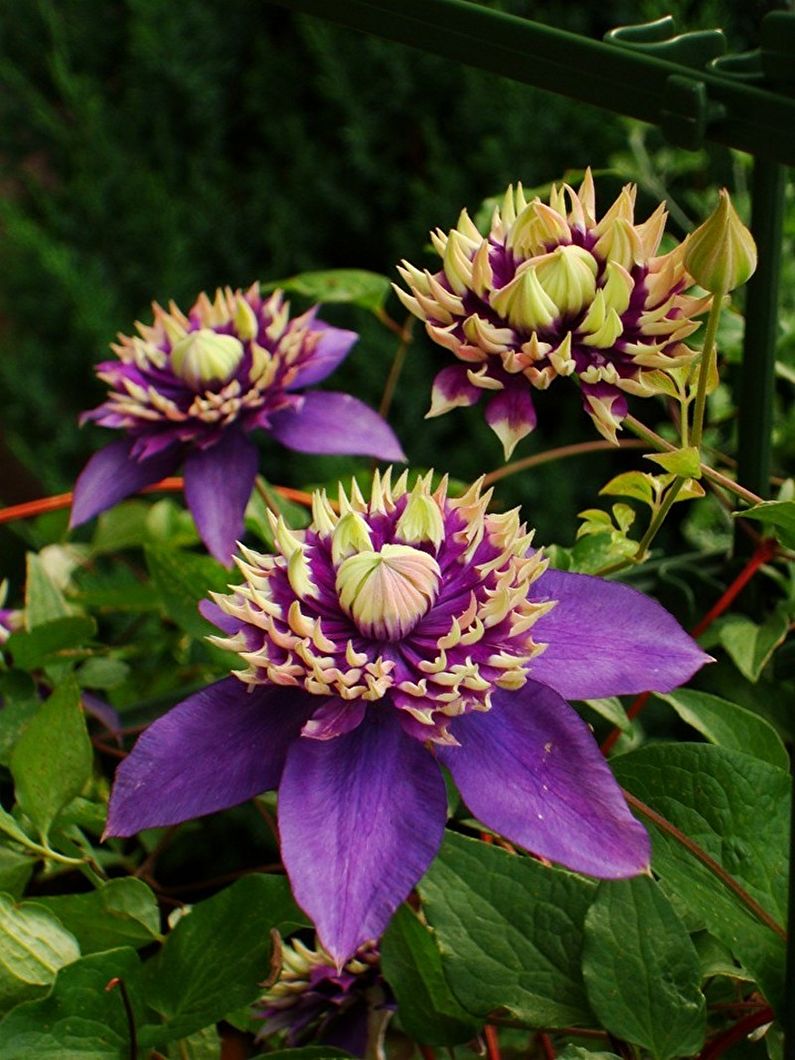
Lush flowering perennial clematis creepers occupy a special place in the decoration of summer cottages, balconies and loggias. On their branches, reaching a length of up to 6 m, there are small leaves and flowers of various shades. They adorn the walls of houses, arches, gratings, mask buildings, create hedges. The location on one plot of several varieties of different periods and flowering colors looks excellent.
The main types
Clematis is very common around the world. Under natural conditions, there are about three hundred of their species, most of which have dozens of varieties. The classification of this plant is quite complicated, it may depend on the place of formation of the buds, the size of the flowers or seeds and other signs. We will consider the most popular types for garden plots, as well as those grown in apartment conditions.
Clematis Jacquman
This species includes a group of varieties having branched shoots up to 6 m in length. Single and also growing in groups of flowers have a diverse color, do not smell, the diameter of a blossoming bud can reach 20 cm. These include: purple "Rouge Cardinal", "Star of India", which has a bright purple bloom, etc.
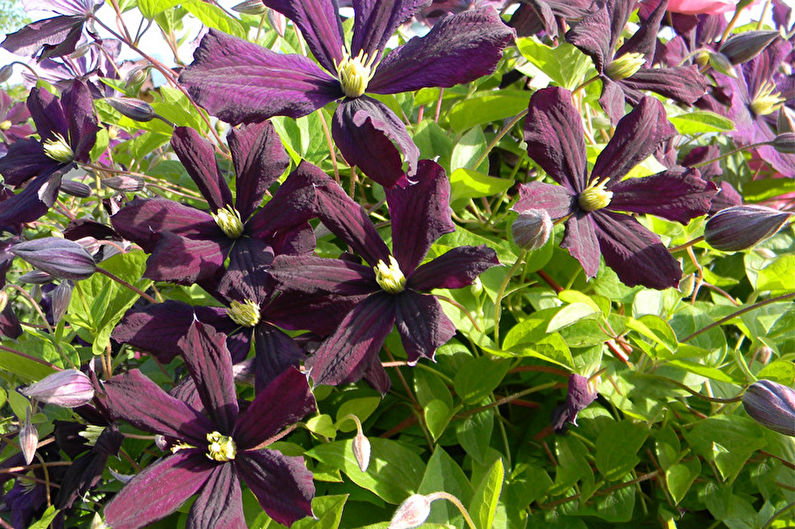
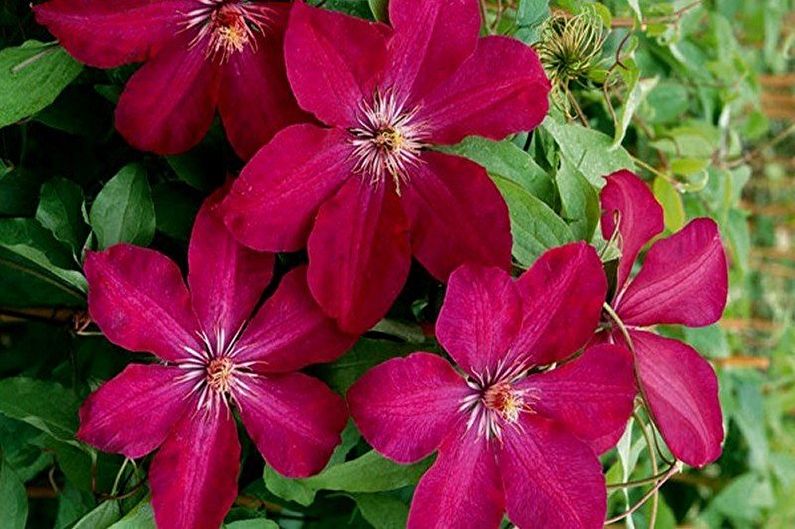
Clematis of Manchu
A whimsical look that requires special lighting, but quite resistant to frost. The length of the branches is not more than 3 m. In the summer, many star-shaped flowers and whitish colors bloom. They have an amazing delicate aroma.
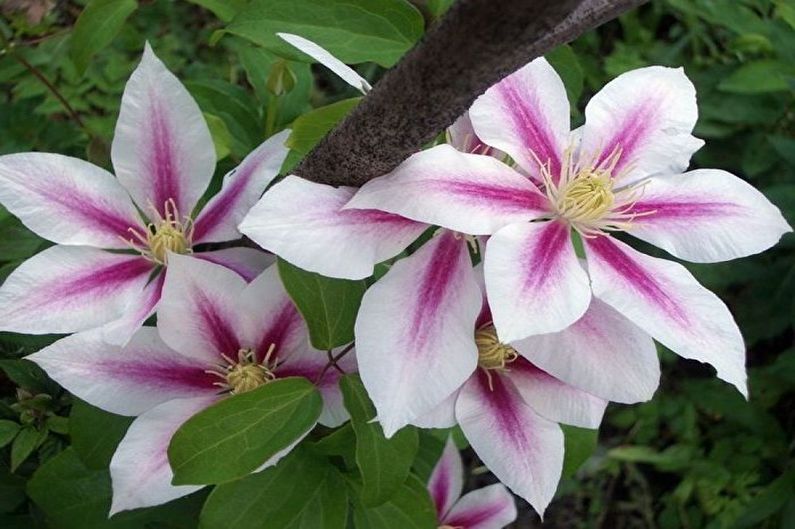
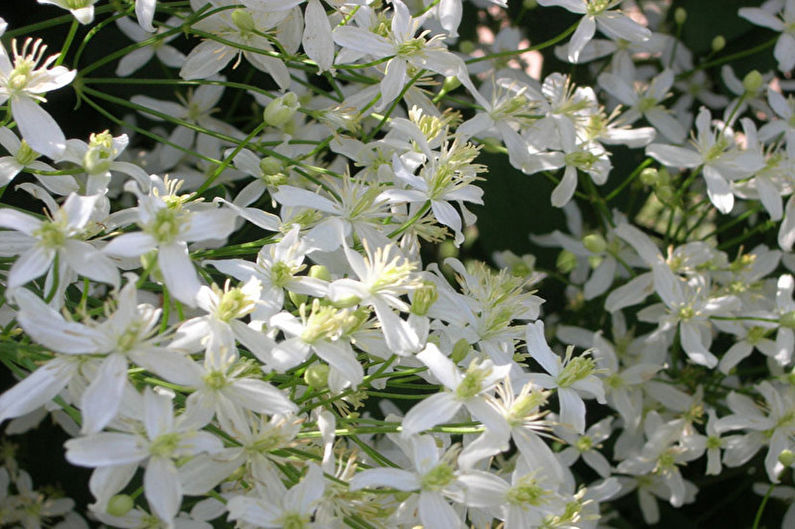
Clematis of Tangut
This species is able to make a bright sunny motley, as the petals of its flowers are painted in yellow and beige tones. The flowers themselves are in the form of fully opened tulips. Liana has an average length of up to 3 m.
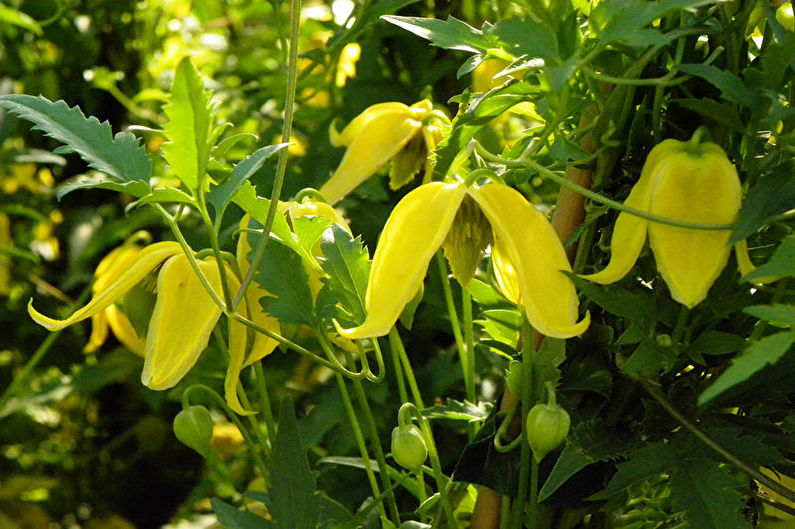
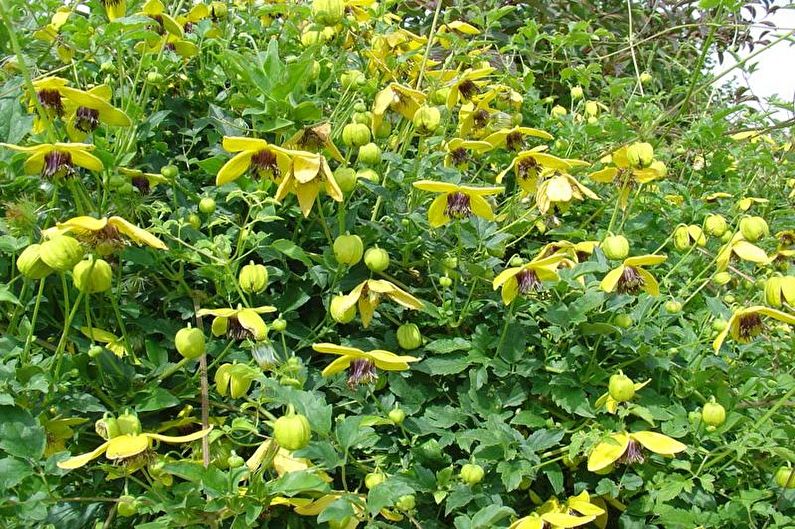
Clematis flowery
The culture has a number of varieties with different shades of flowering, while quite fragrant. For example, the variety “Vivian Pennel” has terry lilac flowers, “Comtes de Busho” - lilac and rather large. The period of magnificent color falls on the summer season.
On the territory of the loggias and balconies, flowery clematis are planted in boxes or containers. It is better to focus on such varieties as “Deronda”, “President”, “Losoniana”, “Stone Flower”, etc. For planting, it is necessary to select seedlings with a well-developed root system.

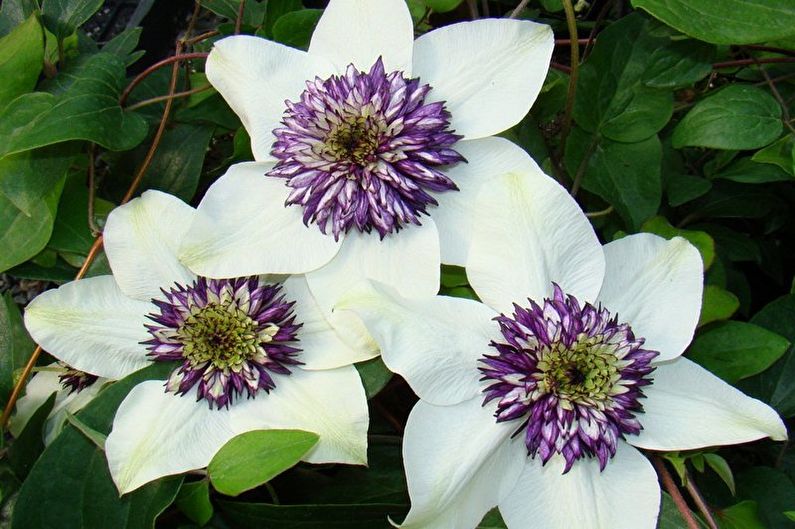
Proper Clematis Care
Lovers of lush flowering need to work hard to see the beautiful flowering culture. It is important to observe the temperature regime and the amount of moisture, since these factors largely determine the predisposition to various kinds of diseases. Proper lighting is also important, as its lack or excess will lead to a change in the color of elegant colors.
Lighting
Clematis loves good diffused light, so in garden conditions it is planted in sunny areas from the south or west. In apartments, you can install boxes and flowerpots on loggias or balconies, making a screen from the wind. The lack of lighting often leads to the fact that the plant changes color, for example, instead of lilac-pink flowers, white-green bloom. Indoors, you can organize artificial lighting.

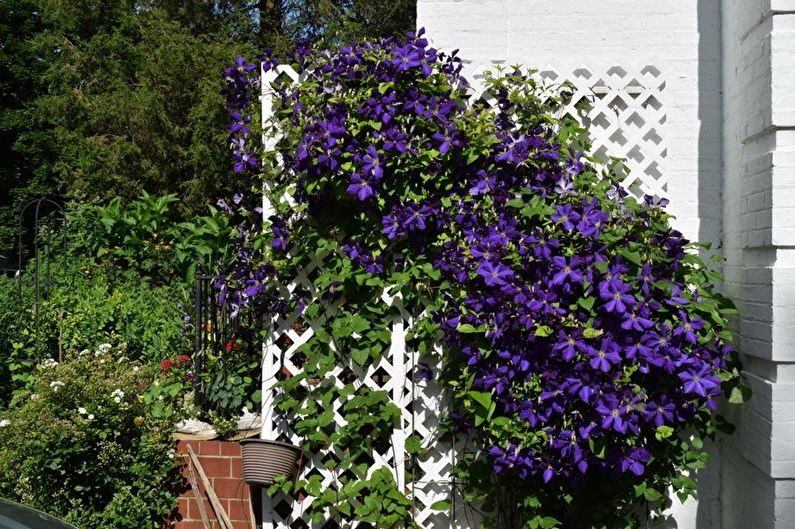
Temperature
We can say that clematis is quite resistant - they withstand temperatures in the range from -6 ° C to + 30 ° C of heat. Nevertheless, during a period of extreme heat, if the plant is on a glazed loggia, it is necessary to organize high-quality ventilation and hydration. The optimum temperature for them is about + 20C.
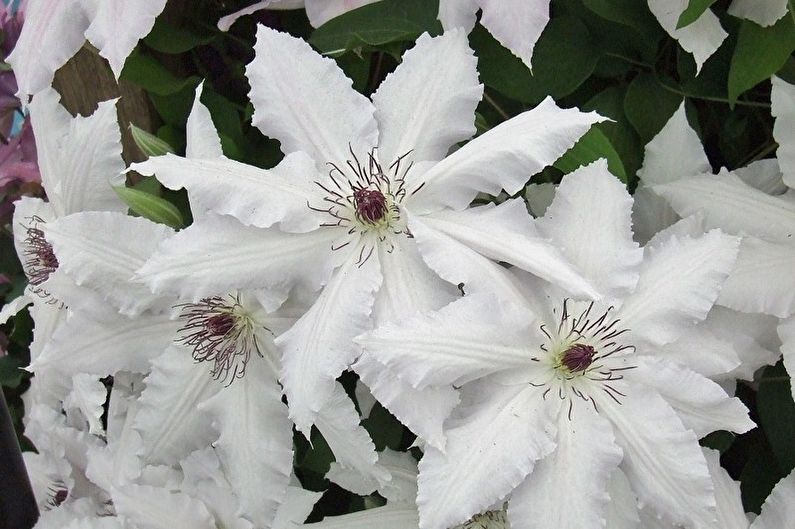
Humidity
Clematis loves average humidity, the golden mean, so to speak.With its lack, the flowers become smaller and the flowering period is reduced, and an excess can lead to fungal diseases and death of the culture. Also, standing near groundwater should be avoided so that the root system does not rot. In hot regions, in order to maintain the necessary soil moisture, several pots with holes in the bottom can be installed around the bushes, filling them with water during irrigation. Water will gradually drain and feed the soil.

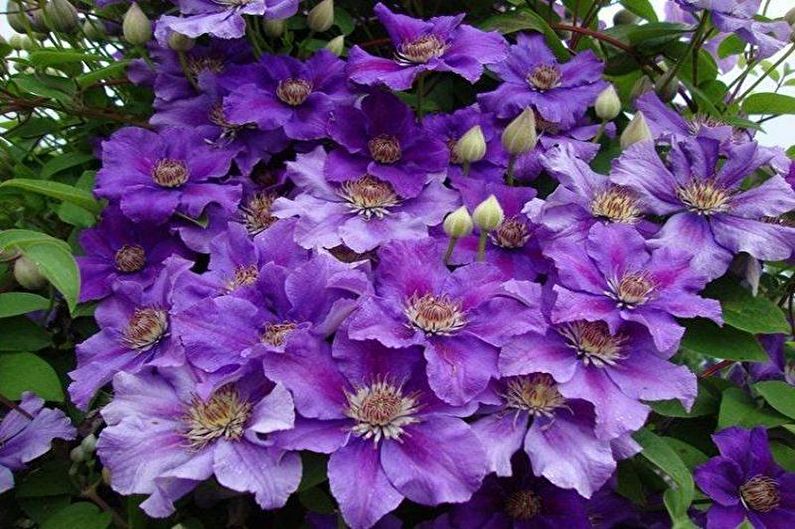
Watering
Water the plant once a week. In the hot season, when the soil is drying out, the amount can be increased up to 3 times. Young clematis drink 10-20 liters of water at a time, and more mature ones up to 40 liters. It is also necessary to irrigate foliage after sunset, you can mulch the soil with moss or small slivers to protect the roots from overheating. For box plants, pour up to 5 liters of water. If it does not absorb, holes can be made in the corners of the container.
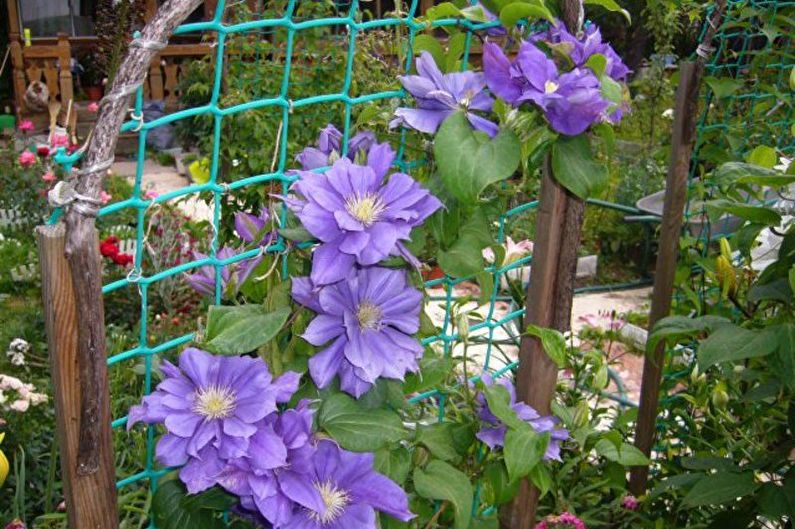
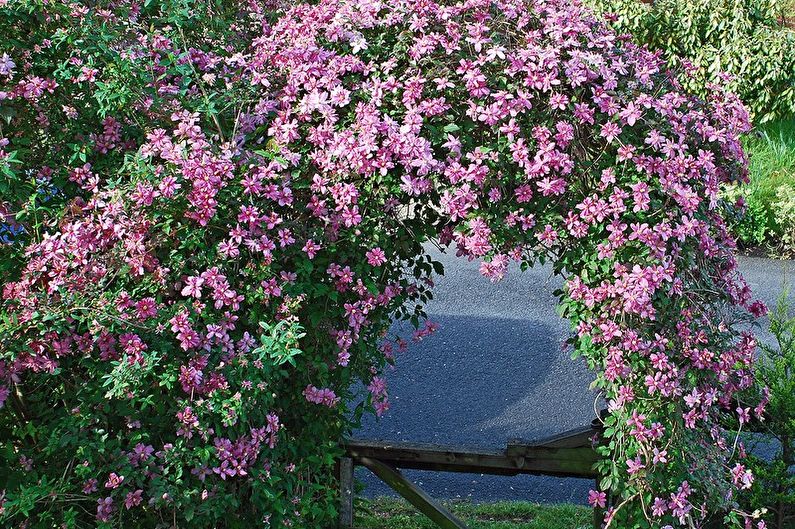
Fertilizers and fertilizing
First of all, it should be noted that this culture loves neutral, slightly alkaline, loose soil. Fresh manure, heavy soils and nearby waters are harmful to her. In order for the plant to bloom excellently in early summer, it is necessary to add top dressing to the diet. To do this, make diluted organic concentrate twice a month. In addition, once a month, clematis should be watered with milk of lime, which can be replaced with chalk or dolomite. Some exotic varieties, shrubs and vines grown from seeds are fertilized with copper concentrate in early summer. The solution is prepared at the rate of one soup spoon per bucket of settled water.
It is also necessary to fertilize the soil with mineral and organic components at least three times. Basically, this is carried out during the budding period, after flowering and pruning. To do this, you can use chicken manure, diluted in water with a ratio of 1:15 or 30 g of finished fertilizer per 10 liters of water.
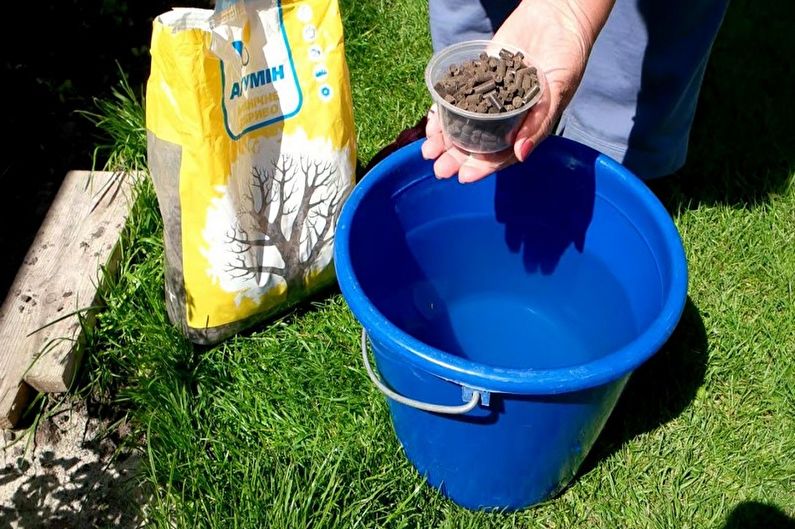
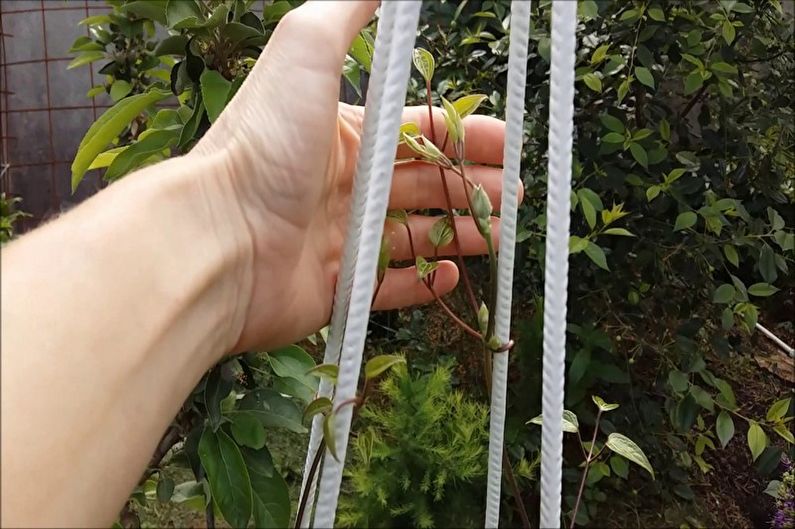
Diseases and Pests
The main diseases that clematis is susceptible to are caused by the fungus. These include: wilt (wilting), gray rot, fusarium, powdery mildew, brown spotting. The main reason, as a rule, is increased humidity. It’s easier not to fight diseases, but to prevent them by conducting preventive procedures. For this, in the spring-autumn periods, clematis and the soil around it are treated with any fungicide. When the plant is still sick, the infected shoots are cut off, and the remaining part and the surrounding soil are treated with a solution of copper sulfate or potassium permanganate.
Of the pests, the gall nematode does the most harm - small worms that start in the root system and lead to the death of the plant. It must be dug up and burned, and the soil treated with nematicides. To avoid the appearance of nematodes, you can plant marigold, marigolds, parsley, dill or mint among clematis bushes - pests do not like them. Slugs and snails can also severely damage foliage, so they are removed from the plant. A spider mite is also dangerous, which can be eliminated with the help of insecticides.
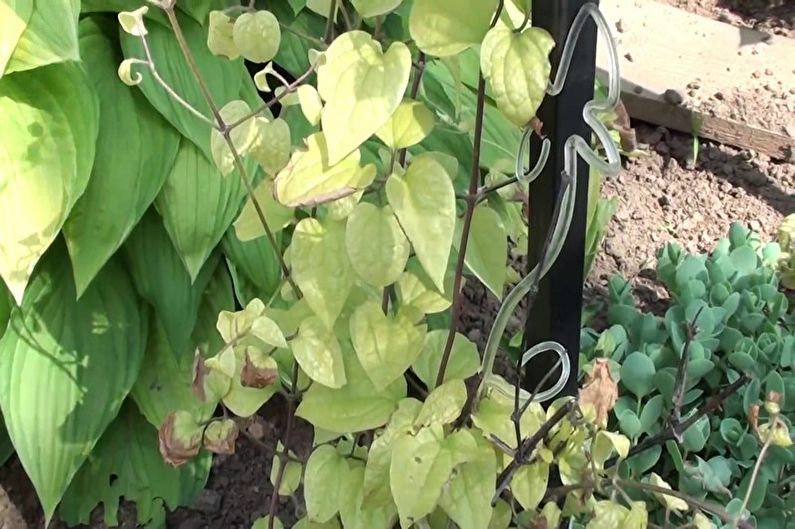
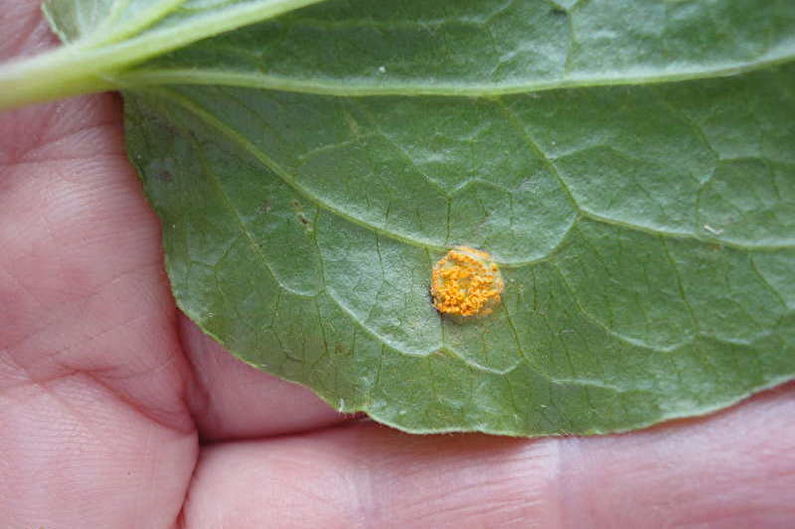
How to transplant clematis
The clematis transplant process is quite difficult, so you must immediately decide on the most suitable place. Landing occurs in the autumn-spring periods. Before this, it is necessary to immediately make supports, so as not to damage the roots. In garden conditions, it is better to choose a sunny, windless corner with slightly alkaline soil. If several plants are planted, the distance between them should be at least a meter. A soil mixture of earth, sand, humus, and mineral fertilizers is poured into the excavated hole. Crops are planted in such a way that the tillering unit is 5-8 cm deep in the soil.
In an apartment, clematis is planted in a container with a height of at least 60 cm and a diameter of up to half a meter. You can use wooden boxes with drainage holes.Sand, organic fertilizers, and some wood ash are necessarily added to the soil. Low-growing varieties can be grown in flowerpots. They need to be watered and fed more often.
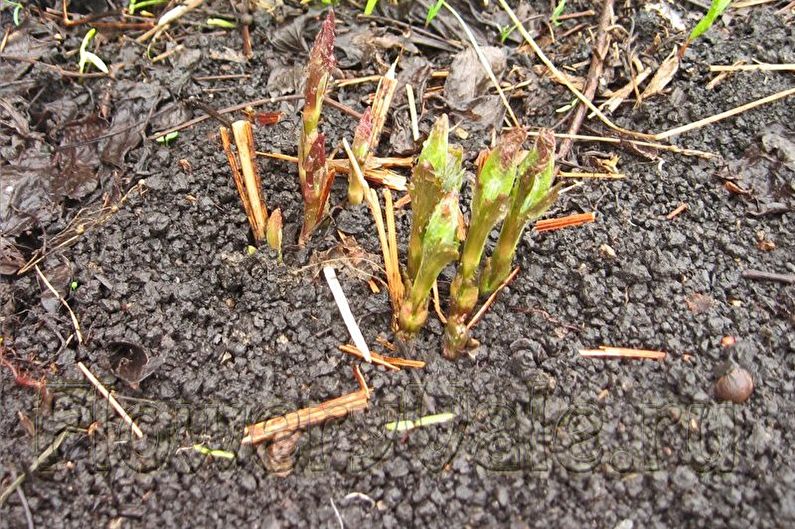
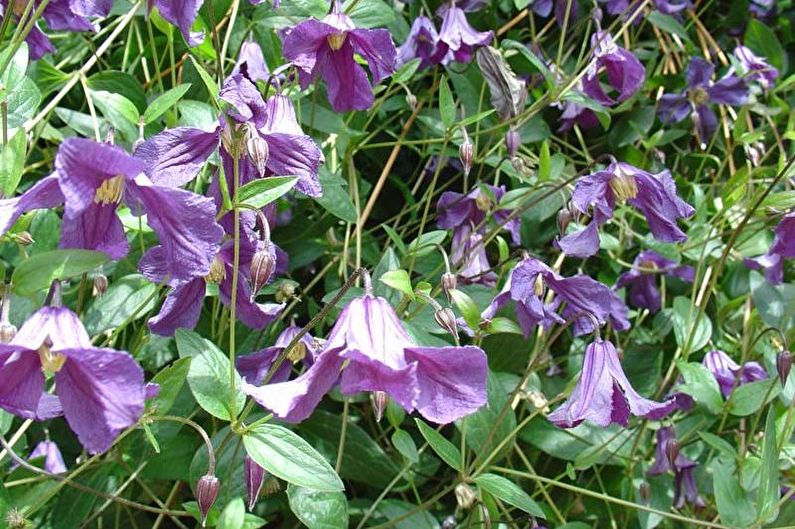
Propagation at home
Clematis is easy to propagate at home. The process can be carried out in several ways, but flower growers tend to give preference to the vegetative, as it gives the fastest result. Reproduction by seeds takes much longer, but its advantage is to obtain simultaneously a large amount of material.
Vegetative propagation of clematis
Florists consider vegetative as the most popular, fastest method for producing new plants. It is carried out in several ways: dividing the bush, cuttings and layering.
Division of the adult bush (5-6 years) is performed in early spring after the buds open, or in the fall. The bush is carefully dug out (removed from the box) so as not to damage the root system, divided into several parts and planted. Due to the fact that the roots of clematis are strong enough, the bushes bloom quite quickly. Too big bush can be dug up on one side, separating part.
Green and woody cuttings are suitable for planting. They are treated with a stimulant and rooted in slightly moist river sand. The optimum temperature for finding cuttings is about + 20C.
Reproduction of clematis by layering is the easiest way in a garden plot. In spring, shallow grooves of up to 10 cm are dug near the bush and young shoots are tilted there, fixed with brackets, covered with earth, watered. After a year, the cuttings take root, then they are separated from the mother bush and transplanted.
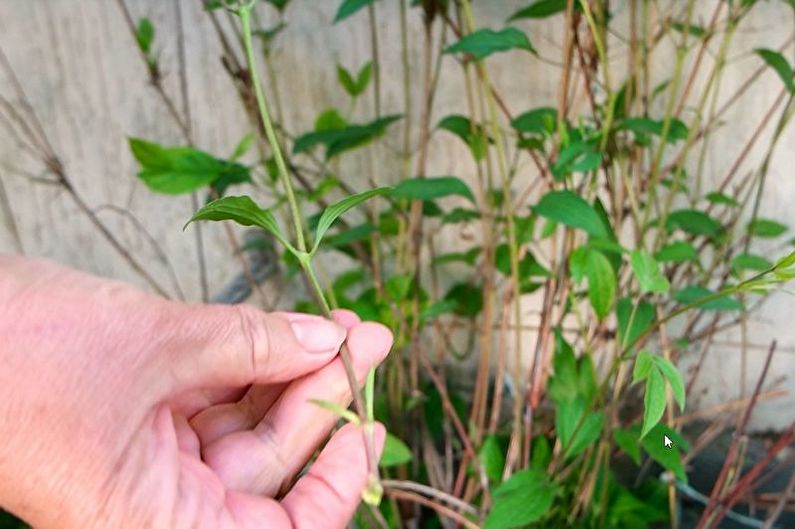
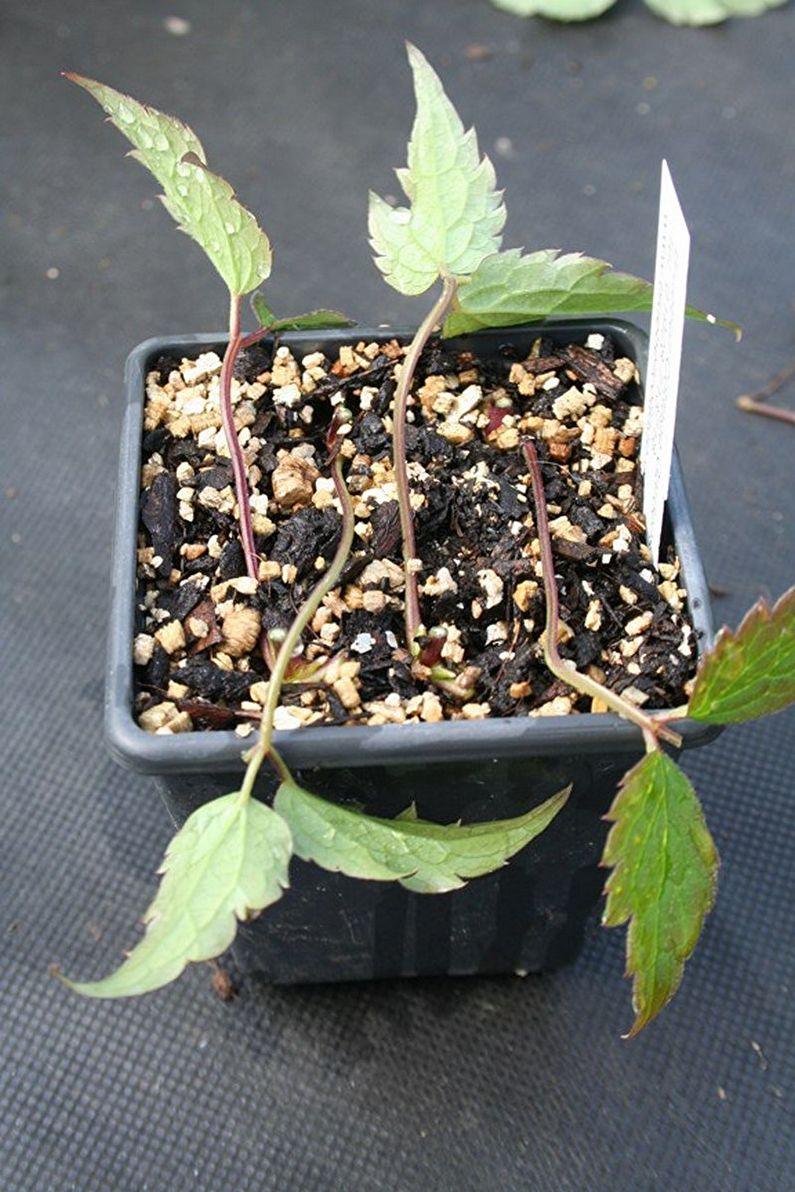
Reproduction of clematis by seeds
This method is best suited for finely flowering varieties. The culture is divided into several types depending on the size of the seeds, the germination time of which is also different. The following types are distinguished:
- Varieties with small seeds germinate in 2-6 weeks;
- With average - from 2 to 6 months;
- With large - have an uneven duration of emergence of seedlings from 1.5 to 8 months.
The sowing of small seeds occurs in March, and larger ones - in late autumn. Clematis seeds must be pre-soaked for two weeks in heated water, which must be replaced several times a day. A soil layer consisting of garden soil mixed with sand and peat is poured into a shallow container. Seeds are immersed in pits no deeper than 1 cm, sprinkled, and the entire container, like a greenhouse, is wrapped with a film. During this period, it is important to observe the necessary conditions - temperature up to + 25 ° C, periodic ventilation and humidification. The first shoots will need bright diffused light. When a plant has two true leaves, it is transplanted into a pot.
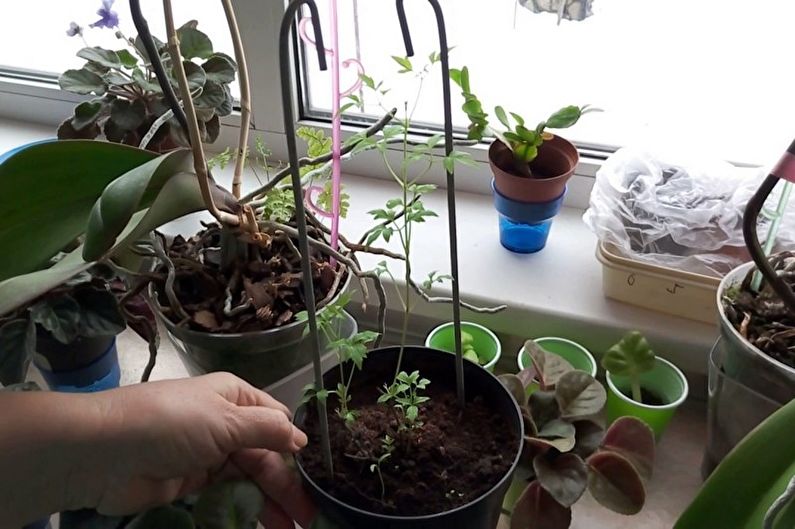
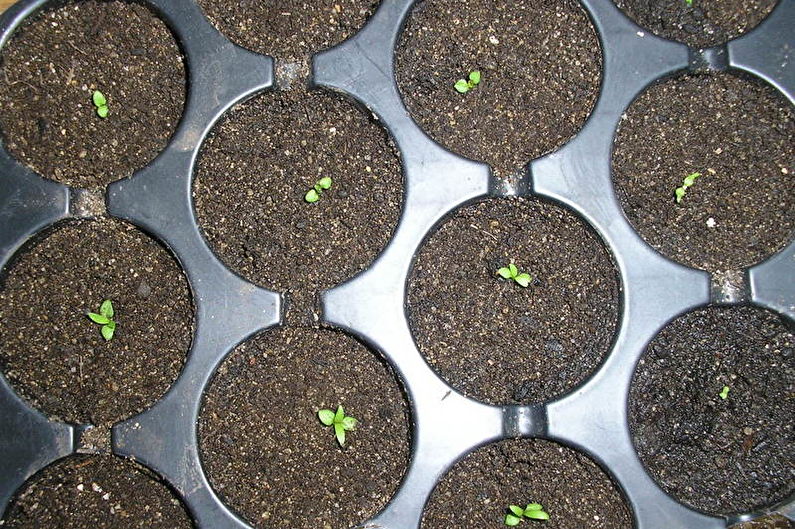
Clematis - photo
The presence of clematis in the flower garden will decorate any site, so these spectacular and attractive plants remain invariably popular. Before you start choosing and growing these flowers in a country house or garden, we suggest you look at our selection of photos of colorful clematis. Enjoy watching!
